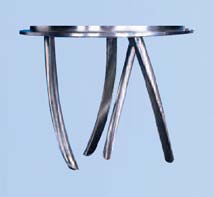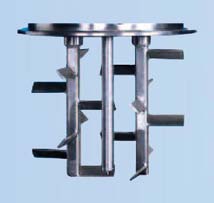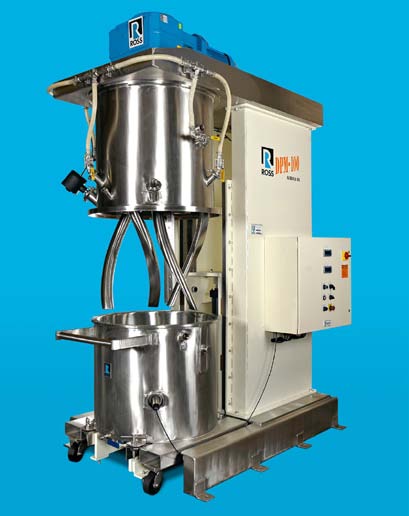Tech Report
Preparing wet granulations in a planetary mixer

Technology Brief
Planetary mixers are ideal for wet granulation processes. Advantages include "one-pot" processing, high uniformity and yield, predictable performance, and ease of cleaning.
Planetary mixer/granulators
Granulation requires the addition of binding fluid/adhesive to a blend of powders. The liquid is added at a pre-determined rate to the batch while it is being mixed. The resulting wet mass is dried and sometimes passed through a mill to produce granules of a chosen size. The product is tested to determine particle size and other physical attributes that indicate suitability for downstream processing, i.e. pressing the granules into tablets or filling them into capsules.
Double planetary mixers have been proven to satisfy the requirement of product uniformity and particle size enlargement (granule formation) in the wet massing phase of wet granulations. They move material by rotating two identical blades on their own axes as they orbit on a common axis. The blades continuously advance along the periphery of the mix vessel, removing material from the walls and transporting it towards the interior.
Mixer speed and liquid addition level both influence the size of the granules. A vacuum-capable double planetary mixer with jacketed vessel can be used to dry the granulation under vacuum after the liquid binder/adhesive solution has been added and thoroughly coated on the powders. The mixer layout and design allow for a virtually complete discharge, ensuring high-yield and very minimal product loss.
Another planetary mixer design called the PowerMix replaces one of the blades in a double planetary mixer with a high speed shaft which also rotates on its own axis while orbiting the mix vessel. Typically, one or two saw-tooth dispersers are attached to this high speed shaft when the application being processed is a viscous fluid. For dry or powdery applications, sharp-edged chopper blades may be used instead.
One-pot processing
Process validation required by the Food and Drug Administration is intrinsically easier to accomplish using a "one-pot" method for granulation as can be achieved in a planetary mixer, rather than the "multiple-pot" approach that is needed for other mixers. For example, the PowerMix`s planetary stirring and high speed chopping action is capable of carrying out all phases of the wet granulation procedure including blending, wet massing, drying and milling (particle size reduction).
Another advantage of producing granulations in a double planetary mixer or a PowerMix is the absence of shaft seals, bearings, packing glands or stuffing boxes submerged in the product. In addition, agitators are raised and lowered in/out of the mix vessel by a hydraulic lift, enabling easy access for cleaning between batches. (A vessel lift design, where the mix vessel is hydraulically raised to meet the agitators and lowered after mixing, is also available.) With the use of multiple interchangeable vessels, a single mixer can serve several product lines and each vessel may be dedicated to a particular formulation, further reducing batch-to-batch cross-contamination risks.
Planetary Mixer Blade Designs used for Granulation Processes

"HV" Blades

Rectangular Blades

Finger Blades
Sample Installation:

Povidone solution is metered into this 100-gallon Double Planetary Mixer as the blades go through the batch of powdered ingredients (yellow iron oxide, corn starch, alginic acid and the active ingredient).
In 45 minutes, the wet granulation reaches the desired consistency and samples are taken to check for homogeneity, drug content, and other properties.